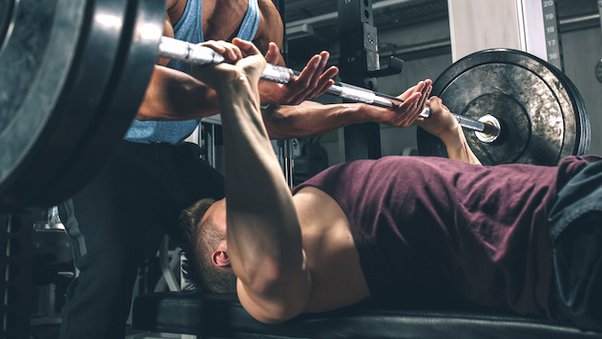
When it comes to performing heavy lifts, having a spotter is not only a wise decision but often a necessity. A spotter is a fellow gym-goer or workout partner who provides assistance and support during exercises that involve heavy weights or increased difficulty.
In this blog post, we’ll discuss the importance of spotters for heavy lifts, the benefits they provide, and how to effectively spot and be spotted.
Why Spotters are Essential for Heavy Lifts
- Safety. One of the primary reasons to have a spotter is to ensure your safety during heavy lifts. A spotter can help you maintain proper form, prevent injury, and assist you if you’re unable to complete a rep, making it a safer workout environment.
- Confidence. Knowing that someone is there to support you can help boost your confidence, allowing you to push yourself harder and attempt heavier lifts without fear of failure or injury.
- Technique. A knowledgeable spotter can provide valuable feedback on your form and technique, helping you correct any issues and improve your overall lifting performance.
- Motivation. Spotters can act as motivators, encouraging you to push through challenging reps and reach new personal bests.
- Accountability. Working out with a spotter can help you maintain consistency in your fitness routine and keep you accountable for your goals.
How to Be an Effective Spotter
- Communication. Before the lift, discuss with the lifter how much assistance they may need, the desired number of reps, and any specific instructions they have for you. Good communication is crucial for a successful spotting experience.
- Pay Attention. Stay focused on the lifter and the exercise at hand. Be ready to provide assistance at a moment’s notice, but also know when to give the lifter space to complete the lift on their own.
- Know Your Limits. Be honest with yourself and the lifter about your ability to spot effectively. If you’re not confident in your ability to support the weight, ask for additional help or suggest the lifter reduce the weight.
- Maintain Proper Positioning. Stand close enough to the lifter to provide support but avoid crowding their personal space. For example, during a bench press, position yourself close to the lifter’s head, with your hands close to (but not touching) the barbell.
- Be Ready to Assist. If the lifter is struggling, step in to provide support. Don’t wait for them to ask for help—anticipate when they may need assistance and be ready to act.
How to Be a Responsible Lifter
- Choose the Right Spotter. Select a spotter who is knowledgeable, experienced, and physically capable of supporting you during your heavy lifts.
- Communicate Your Needs. Be clear about your goals, the type of assistance you need, and any specific concerns or preferences you have.
- Warm Up and Use Proper Form. Prepare your body for heavy lifts by warming up and stretching, and always prioritize using proper form during your exercises.
- Know When to Ask for Help. Don’t be afraid to ask your spotter for assistance if you’re struggling or feel unsure about your ability to complete a rep.
- Show Gratitude. Thank your spotter for their help and support, and offer to return the favor when needed.
Conclusion
Spotters play a crucial role in ensuring a safe and productive workout experience, especially during heavy lifts. By understanding the importance of spotters and following proper spotting and lifting etiquette, you can improve your overall lifting performance, reach new personal bests, and foster a supportive and collaborative gym environment. Remember, teamwork makes the dream work! Keep on lifting heavy!!
Till next time,
Coach Roland



